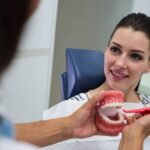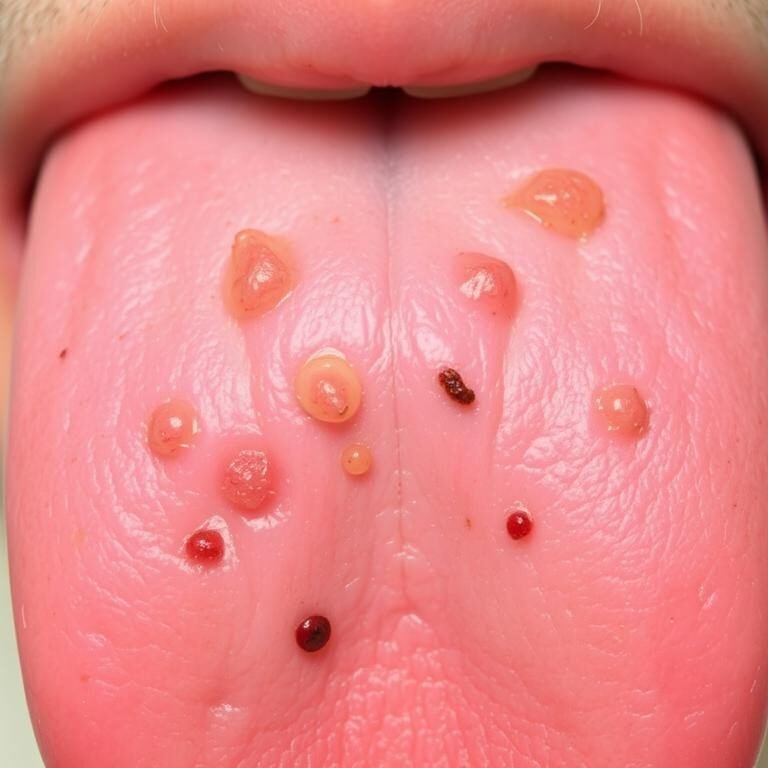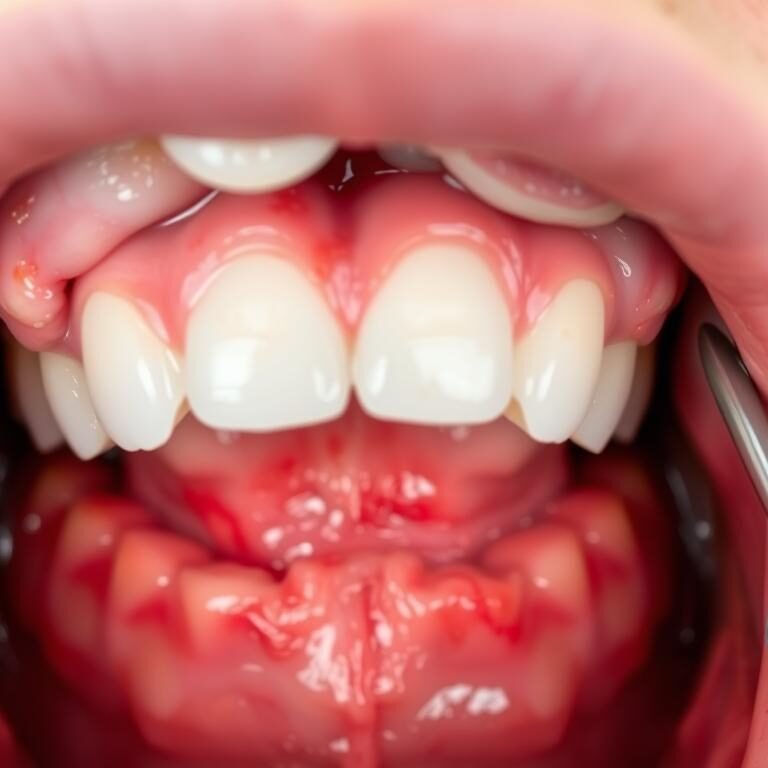Table of Contents
Understanding the Importance of Oral Exams
Oral exams play a crucial role in maintaining a healthy smile and overall well-being. Regular dental check-ups allow us to identify and address potential issues before they escalate into major problems. These exams provide an opportunity for our dental professionals to thoroughly evaluate the condition of your teeth, gums, and jaw, and to detect any early signs of disease or abnormalities.
During an oral exam, your dentist will perform a visual examination, assessing the overall condition of your mouth. This includes checking for any signs of tooth decay, gum disease, or oral cancer. X-rays and imaging techniques may also be used to capture detailed images of your teeth and jaw, allowing for a more comprehensive assessment. Additionally, your dentist will evaluate the health of your gums, checking for any signs of periodontal disease. They will also assess your jaw alignment and function, as well as examine your temporomandibular joint for any signs of dysfunction (TMJ). These evaluations ensure that any potential issues are identified and addressed promptly, promoting oral health and preventing further complications.

Initial Consultation: Setting Up Your Dental Checkup
Before you embark on your dental checkup journey, it is important to schedule an initial consultation with your dentist. This preliminary meeting is crucial in setting up your dental checkup and ensuring that all necessary preparations are in place. During the initial consultation, you will have an opportunity to discuss your dental concerns, ask questions, and provide your dentist with essential information about your oral health history.
To make the most of your initial consultation, it is advisable to come prepared with any relevant medical records or dental insurance information. This will enable your dentist to have a comprehensive understanding of your medical history and cater their recommendations to your specific needs. During the consultation, your dentist may also ask you about any previous dental procedures or treatments you have undergone, as well as any current medications or medical conditions that may impact your dental health.
The initial consultation is also a time for you to express any specific concerns or goals you may have for your dental checkup. Whether you are seeking cosmetic improvements, addressing tooth sensitivity, or simply maintaining the overall health of your teeth and gums, communicating your desires with your dentist will help them tailor their examination and treatment plan to meet your expectations.
Overall, the initial consultation serves as a foundation for your dental checkup journey. By providing your dentist with the necessary information and expressing your oral health goals, you can ensure that your dental checkup is comprehensive and tailored to your specific needs. So, don’t underestimate the importance of this step and take the time to schedule your initial consultation for a successful dental checkup experience.
Gathering Medical History: Providing Your Dentist with Essential Information
Before your dental checkup, it is crucial to provide your dentist with your medical history, as it enables them to tailor your treatment plan and ensure your safety throughout the examination. Gathering your medical history involves discussing any preexisting medical conditions, medications you are taking, and any allergies you may have.
This information is essential because certain medical conditions and medications can have an impact on your oral health. For example, conditions like diabetes and heart disease can increase the risk of gum disease and other oral health issues. Additionally, some medications can cause dry mouth, which can lead to tooth decay and other oral health problems. By understanding your medical history, your dentist can identify any potential risks and take appropriate measures to address them during your dental checkup.
| Aspect | Information Provided |
|---|---|
| Personal Information | Name, Age, Gender, Address, Contact Information |
| Medical Conditions | Diabetes, Hypertension, Asthma, Epilepsy, etc. |
| Allergies | Medications, Latex, Metals, Foods, etc. |
| Medications | Current prescriptions, over-the-counter drugs |
| Previous Surgeries | Appendectomy, Wisdom teeth removal, etc. |
| Family History | Dental issues, Genetic conditions, etc. |
| Dental History | Previous dental treatments, surgeries, issues |
| Habits | Smoking, Alcohol consumption, Bruxism, etc. |
Visual Examination: Assessing the Overall Condition of Your Mouth
When you visit the dentist for a visual examination, they will carefully assess the overall condition of your mouth. This examination is a crucial step in maintaining good dental health. The dentist will visually inspect your teeth, gums, and other oral structures to identify any issues or areas in need of attention.
During the visual examination, the dentist will use various tools like mirrors, scalers, and probes to thoroughly examine your mouth. They will look for signs of tooth decay, gum disease, oral lesions, and other abnormalities. The dentist will also check the alignment of your teeth and evaluate the overall bite.

The visual examination allows the dentist to detect and diagnose dental problems early on, which can prevent more serious issues down the line. By assessing the overall condition of your mouth, the dentist can develop a tailored treatment plan to address any concerns and help you maintain a healthy and beautiful smile. So, don’t neglect your regular visual examinations as they play a crucial role in keeping your oral health in check.
X-rays and Imaging: Capturing Detailed Images of Your Teeth and Jaw
X-rays and imaging play a crucial role in capturing detailed images of your teeth and jaw, providing your dentist with valuable information for diagnosis and treatment planning. These imaging techniques give a comprehensive view of your oral health, allowing your dentist to identify any issues that may not be apparent during a visual examination alone.
One of the most common types of dental imaging is the dental X-ray. X-rays use low levels of radiation to produce images of your teeth, jaw, and surrounding structures. With X-rays, your dentist can detect problems such as tooth decay, bone loss, oral infections, impacted teeth, and abnormalities in jaw alignment. This enables them to create a personalized treatment plan tailored to your specific needs.
In addition to X-rays, advanced imaging techniques like cone beam computed tomography (CBCT) provide even more detailed images of your teeth and jaw. CBCT scans generate 3D images, allowing your dentist to visualize your oral structures from different angles. This is especially beneficial for complex procedures like dental implant placement or orthodontic treatment, as it provides a more accurate evaluation of your oral health.

By utilizing X-rays and advanced imaging techniques, dentists can capture detailed images of your teeth and jaw, enabling them to make more accurate diagnoses and develop appropriate treatment plans. These imaging techniques are safe and efficient, providing valuable insights for optimal dental care.
Periodontal Evaluation: Assessing the Health of Your Gums
During a dental checkup, one important aspect that dentists assess is the health of your gums through a periodontal evaluation. The gums play a vital role in supporting and protecting your teeth, so it is essential to ensure they are in good condition.
During a periodontal evaluation, the dentist will examine your gums for any signs of inflammation, bleeding, or recession. They will also assess the depth of the spaces between your gums and teeth, known as periodontal pockets. This evaluation helps to determine the presence of gum disease, such as gingivitis or periodontitis. In some cases, X-rays may be used to identify any bone loss that may have occurred as a result of gum disease. By performing a thorough periodontal evaluation, dentists can provide appropriate treatment and preventive measures to maintain the health of your gums.
| Evaluation Method | Description |
|---|---|
| Periodontal Probing | Measurement of pocket depth around teeth to assess gum health. |
| Gum Recession Assessment | Evaluation of the extent of gum tissue loss around teeth. |
| Bleeding on Probing | Observation of bleeding when probing gums, indicating inflammation. |
| Mobility Assessment | Examination of tooth movement, which can indicate gum and bone support. |
| X-Ray Imaging | Radiographic assessment to detect bone loss and other structural issues. |
Checking for Tooth Decay: Identifying Cavities and Caries
Tooth decay is a common oral health problem that affects people of all ages. It occurs when the bacteria in our mouth feed on the sugars and starches from the food we eat, producing acids that attack the enamel of our teeth. Over time, these acids can cause the formation of cavities and caries, which can lead to pain, sensitivity, and even tooth loss if not treated promptly.
During a dental checkup, one of the main objectives is to identify and diagnose tooth decay. Dentists use various methods to accomplish this, including visual examination, dental X-rays, and specialized instruments. Visual examination involves looking for any visible signs of decay, such as dark spots or holes on the surfaces of the teeth. X-rays are particularly helpful in detecting decay between the teeth or in areas not easily visible. Dentists also use instruments, such as dental explorers, to feel for soft spots on the teeth, which could indicate the presence of cavities.
It is important to catch tooth decay early on to prevent further damage to the teeth. Regular dental checkups and cleanings play a vital role in this process, as they allow dentists to identify and address decay in its earliest stages. By proactively checking for tooth decay, dentists can help patients maintain healthy smiles and prevent more extensive and costly dental treatments in the future.
Oral Cancer Screening: Detecting Signs of Oral Cancer
Oral cancer is a serious health concern that affects thousands of individuals each year. As part of your routine dental checkup, your dentist will perform a thorough oral cancer screening to detect any signs or symptoms of this disease. This screening is essential in identifying oral cancer at its early stages when treatment options are most effective.
During the oral cancer screening, your dentist will carefully examine your mouth, lips, tongue, and throat for any unusual or suspicious changes. They will look for red or white patches, sores that don’t heal, lumps or bumps, or any other abnormal growths. In some cases, your dentist may use additional tools or technologies such as special lights or dye to enhance the examination process and detect any hidden areas of concern.

Early detection of oral cancer significantly improves the chances of successful treatment and a positive prognosis. By regularly visiting your dentist for oral cancer screenings, you are taking an active role in safeguarding your oral health and overall well-being. Remember, prevention is always better than cure, and detecting oral cancer in its early stages can potentially save lives.
Bite Assessment: Evaluating Your Jaw Alignment and Function
When it comes to maintaining optimal oral health, evaluating the alignment and function of your jaw is a crucial part of the process. Bite assessment is a dental examination that focuses on assessing the way your upper and lower teeth meet when you close your mouth. This evaluation not only helps identify any misalignments or abnormalities in your bite, but also plays a key role in diagnosing and treating various dental issues.
During a bite assessment, your dentist will carefully examine your jaw alignment to determine if you have a normal or abnormal bite pattern. They will evaluate how your upper and lower teeth come together when you close your mouth, looking for any signs of malocclusion, such as overbite, underbite, or crossbite. Additionally, they will assess the function of your jaw, observing how it moves and checking for any issues like jaw clicking, popping, or pain.
The information gathered during the bite assessment is crucial for diagnosing and planning appropriate treatment for various dental conditions. By evaluating your jaw alignment and function, your dentist can identify potential issues that may require intervention, such as orthodontic treatment or bite adjustment procedures. Ultimately, a thorough bite assessment ensures that your teeth and jaw work together harmoniously, facilitating proper chewing, speaking, and overall oral health.
TMJ Evaluation: Examining Your Temporomandibular Joint for Dysfunction
During a comprehensive oral exam, your dentist may perform a TMJ evaluation to assess the health and function of your temporomandibular joint. The temporomandibular joint, or TMJ, connects your jaw to your skull and allows you to open and close your mouth, chew, and speak. Dysfunction in this joint can lead to a range of issues, including jaw pain, difficulty in opening or closing the mouth, and even headaches or earaches.
To evaluate your TMJ, your dentist will carefully examine the joint for any signs of dysfunction. They will assess the range of motion, looking for any limitations or abnormalities. They will also check for any clicking or popping sounds when you open and close your mouth. Additionally, your dentist may perform additional tests, such as measuring your bite and evaluating the alignment of your jaw. These evaluations can help identify any problems with your TMJ and form the basis for an appropriate treatment plan.
Regular TMJ evaluations are essential for early detection and intervention for potential dysfunction of the temporomandibular joint. By addressing any issues early on, you can prevent further complications and ensure a healthy and functional jaw. If you experience any discomfort or difficulties with your jaw, make sure to discuss it with your dentist, as they can guide you through a proper evaluation and provide appropriate treatment options.
Teeth Cleaning: Removing Plaque and Tartar Buildup
Teeth cleaning is a crucial part of maintaining good oral health. Regular cleanings help remove plaque and tartar buildup, which can contribute to tooth decay and gum disease if left untreated. During a teeth cleaning appointment, a dental hygienist or dentist will use specialized tools to carefully remove these harmful substances from your teeth and gums.
First, the dental professional will start by assessing the condition of your teeth and gums, identifying areas that require extra attention. They will then use a scaler to carefully scrape away plaque and tartar from the surfaces of your teeth, including hard-to-reach areas. This process may cause slight discomfort or sensitivity, but it is generally painless.
After removing plaque and tartar, the dental professional will proceed to polish your teeth using a gritty toothpaste and a high-powered toothbrush. This step helps remove surface stains and leaves your teeth feeling smooth and polished. Finally, a fluoride treatment may be applied to strengthen your tooth enamel and provide extra protection against cavities.
Teeth cleaning appointments are typically recommended every six months, although some individuals may require more frequent cleanings based on their specific oral health needs. By prioritizing regular teeth cleanings, you can proactively protect your oral health and maintain a beautiful, healthy smile.
Scaling and Root Planing: Addressing Gum Disease and Deep Cleaning
Scaling and root planing is a crucial procedure in addressing gum disease and promoting deep cleaning of the mouth. Also known as a deep cleaning, this treatment targets the buildup of plaque and tartar below the gumline and along the roots of the teeth.
During scaling, the dentist uses specialized tools to remove the accumulated plaque and tartar, which can harbor bacteria and cause inflammation. This process helps to eliminate bacteria and restore the health of the gums. Root planing, on the other hand, smoothens the rough surfaces of the tooth roots to prevent further bacteria accumulation and promote gum reattachment.
Scaling and root planing is typically performed under local anesthesia to ensure patient comfort. Following the procedure, patients may experience slight discomfort or sensitivity, which can be managed with over-the-counter pain relievers. Regular dental check-ups and thorough oral hygiene practices, such as brushing and flossing, are crucial to maintain the results of scaling and root planing and prevent the recurrence of gum disease.
In conclusion, scaling and root planing play a vital role in addressing gum disease by removing plaque and tartar buildup and promoting the overall health of the gums. This procedure, along with regular dental check-ups and proper oral hygiene practices, can help patients maintain a healthy smile and prevent further complications associated with gum disease.
Applying Fluoride Treatment: Strengthening and Protecting Your Teeth
Fluoride treatment is a crucial step in maintaining optimal dental health and protecting your teeth from decay. This treatment involves the application of a fluoride gel or varnish to the surfaces of your teeth, where it can penetrate the enamel and strengthen it against acid attacks caused by bacteria in plaque.
The primary goal of fluoride treatment is to prevent tooth decay and cavities. Fluoride works by remineralizing the enamel, making it more resistant to acid erosion. It also inhibits the growth of bacteria that produce harmful acids. In fact, studies have shown that topical fluoride application can reduce the risk of cavities by up to 30%.
Fluoride treatment is especially beneficial for children and adolescents, as their teeth are still developing and are more susceptible to decay. According to the American Dental Association, the use of fluoride has been one of the most effective public health measures in reducing tooth decay in children. It is recommended that children receive professional fluoride treatments every six months to ensure optimal protection.
In addition to professional applications, it is important to maintain a regular oral hygiene routine that includes fluoride toothpaste and mouthwash. This will further enhance the benefits of fluoride treatment and help to maintain a strong and healthy smile.
In conclusion, fluoride treatment plays a vital role in strengthening and protecting teeth against decay. By incorporating this preventive measure into your dental care routine, you can significantly reduce the risk of cavities and ensure the long-term health of your teeth. Consult with your dentist to determine the most appropriate fluoride treatment plan for you or your child’s specific needs.
Dental Sealants: Preventing Cavities on Molars and Premolars
Dental sealants are an effective preventive measure in the fight against tooth decay, particularly in molars and premolars. These sealants are thin coatings applied to the chewing surfaces of the back teeth, providing an extra layer of protection against the build-up of plaque and bacteria. One of the key benefits of dental sealants is their ability to penetrate the deep grooves and pits of these teeth, which are often difficult to clean thoroughly with regular brushing and flossing alone. By creating a smooth surface, sealants prevent food particles from getting trapped, reducing the risk of cavities forming in these vulnerable areas.
Research has shown that dental sealants can significantly reduce the incidence of tooth decay. According to the Centers for Disease Control and Prevention (CDC), children aged 6 to 11 without sealants on their permanent molars are three times more likely to develop cavities compared to those with sealants. Furthermore, sealants can last for several years with proper care, providing long-lasting protection for children and adults alike. By considering dental sealants as part of your preventive dental care, you can take proactive steps towards maintaining optimal oral health and minimizing the need for more extensive dental treatment in the future.
Oral Hygiene Instructions: Educating Patients on Proper
Maintaining proper oral hygiene is crucial for achieving and maintaining good dental health. By following the right oral hygiene instructions, patients can effectively prevent oral diseases and maintain a healthy smile. Educating patients on proper oral hygiene practices is a vital part of any dental checkup.
During a dental visit, dental professionals provide patients with personalized instructions tailored to their specific needs. These instructions typically include brushing teeth at least twice a day using a soft-bristle toothbrush and fluoride toothpaste. It is important to emphasize the technique of brushing, ensuring that patients are brushing for at least two minutes and covering all areas of their mouth. Additionally, patients should be informed about the significance of flossing daily to remove plaque and food particles from between teeth and along the gumline. Educating patients about using proper flossing techniques, such as gently sliding the floss between teeth and forming a C-shape to clean beneath the gumline, can greatly enhance their oral hygiene routine.
Furthermore, patients should be advised to limit their intake of sugary and acidic foods and beverages that can contribute to tooth decay and erosion. Encouraging them to incorporate a balanced diet rich in fruits, vegetables, and dairy products can help promote a healthy mouth. Lastly, dentists may recommend using antimicrobial mouth rinses or other supplementary oral care products to further enhance oral health.
By providing patients with comprehensive oral hygiene instructions, dental professionals empower individuals to take charge of their dental health. This knowledge equips patients with the tools they need to maintain optimal oral hygiene practices, prevent oral diseases, and keep their smiles healthy and bright.
Why is it important to have regular oral exams?
Regular oral exams are crucial for detecting any oral health issues early on, such as tooth decay, gum disease, or oral cancer. These exams help in maintaining good oral hygiene and preventing serious dental problems.
What should I expect during an initial consultation for a dental checkup?
During an initial consultation, your dentist will discuss your dental history, perform a visual examination of your mouth, take X-rays if necessary, and assess the overall condition of your oral health.
How does a periodontal evaluation help assess the health of my gums?
A periodontal evaluation involves measuring the depth of the spaces between your gums and teeth, checking for gum recession, and evaluating the presence of gum disease. This evaluation helps your dentist determine the health of your gums and the appropriate treatment required.
What is scaling and root planing?
Scaling and root planing is a deep cleaning procedure used to treat gum disease. It involves removing plaque and tartar buildup from below the gumline and smoothing out the tooth roots to promote gum tissue healing.
What is the purpose of fluoride treatment?
Fluoride treatment is used to strengthen the enamel of your teeth, making them more resistant to decay. It also helps to remineralize areas of the teeth that have been damaged by acid attacks.
How do dental sealants prevent cavities?
Dental sealants are thin, protective coatings applied to the chewing surfaces of molars and premolars. They act as a barrier, preventing bacteria and food particles from getting trapped in the deep grooves of these teeth and causing cavities.
What are some oral hygiene instructions I should follow?
Proper oral hygiene instructions include brushing your teeth twice a day with a fluoride toothpaste, flossing daily, using mouthwash, maintaining a balanced diet, and visiting your dentist regularly for checkups and cleanings.
How often should I have oral exams?
It is generally recommended to have oral exams every six months. However, the frequency may vary depending on your individual oral health needs. Your dentist will advise you on the appropriate interval for your checkups.











